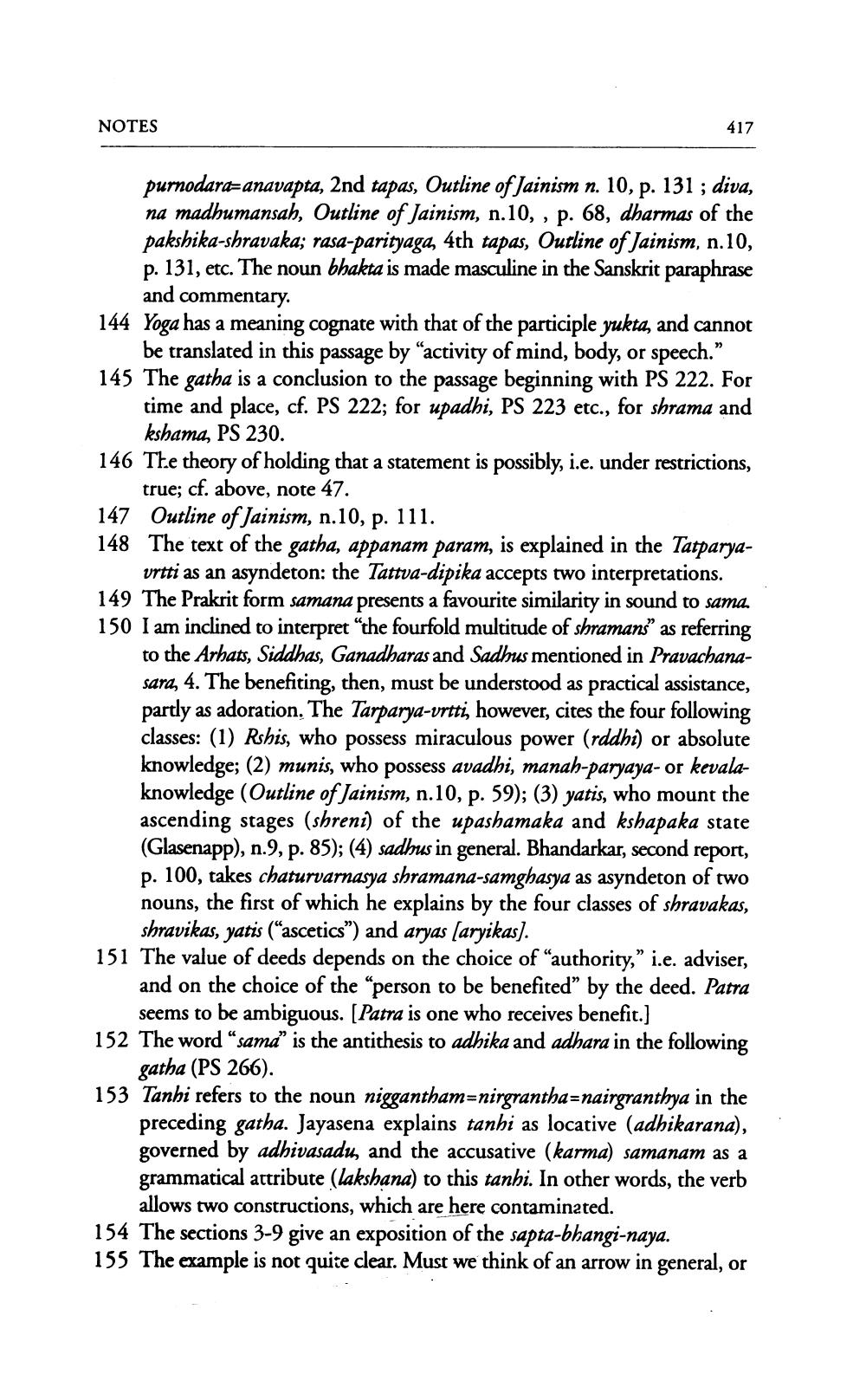________________
NOTES
417
purnodara=anavapta, 2nd tapas, Outline of Jainism n. 10, p. 131 ; diva, na madhumansah, Outline of Jainism, n.10, , p. 68, dharmas of the pakshika-shravaka; rasa-parityaga, 4th tapas, Outline of Jainism, n. 10, p. 131, etc. The noun bhakta is made masculine in the Sanskrit paraphrase
and commentary. 144 Yoga has a meaning cognate with that of the participle yukta, and cannot
be translated in this passage by “activity of mind, body, or speech.” 145 The gatha is a conclusion to the passage beginning with PS 222. For
time and place, cf. PS 222; for upadhi, PS 223 etc., for shrama and
kshama, PS 230. 146 The theory of holding that a statement is possibly, i.e. under restrictions,
true; cf. above, note 47. 147 Outline of Jainism, n.10, p. 111. 148 The text of the gatha, appanam param, is explained in the Tatparya
vrtti as an asyndeton: the Tattva-dipika accepts two interpretations. 149 The Prakrit form samana presents a favourite similarity in sound to sama. 150 I am inclined to interpret "the fourfold multitude of shramans” as referring
to the Arhats, Siddhas, Ganadharas and Sadhus mentioned in Pravachanasara, 4. The benefiting, then, must be understood as practical assistance, partly as adoration. The Tarparya-vrtti, however, cites the four following classes: (1) Rshis, who possess miraculous power (rddhi) or absolute knowledge; (2) munis, who possess avadhi, manah-paryaya-or kevalaknowledge (Outline of Jainism, n.10, p. 59); (3) yatis, who mount the ascending stages (shreni) of the upashamaka and kshapaka state (Glasenapp), n.9, p. 85); (4) sadhus in general. Bhandarkar, second report, p. 100, takes chaturvarnasya shramana-samghasya as asyndeton of two nouns, the first of which he explains by the four classes of shravakas,
shravikas, yatis (“ascetics”) and aryas (aryikas). 151 The value of deeds depends on the choice of "authority," i.e. adviser,
and on the choice of the “person to be benefited” by the deed. Patra
seems to be ambiguous. (Patra is one who receives benefit.] 152 The word "sama" is the antithesis to adhika and adhara in the following
gatha (PS 266). 153 Tanhi refers to the noun niggantham=nirgrantha=nairgranthya in the
preceding gatha. Jayasena explains tanhi as locative (adhikarana), governed by adhivasadu, and the accusative (karma) samanam as a grammatical attribute (lakshana) to this tanhi. In other words, the verb
allows two constructions, which are here contaminated. 154 The sections 3-9 give an exposition of the sapta-bhangi-naya. 155 The example is not quite clear. Must we think of an arrow in general, or




